How to Remove Rust From Tools (Prevention Tips & More)
Author: Omar Alonso | Editor: Omar Alonso
Review & Research: Jen Worst & Chris Miller
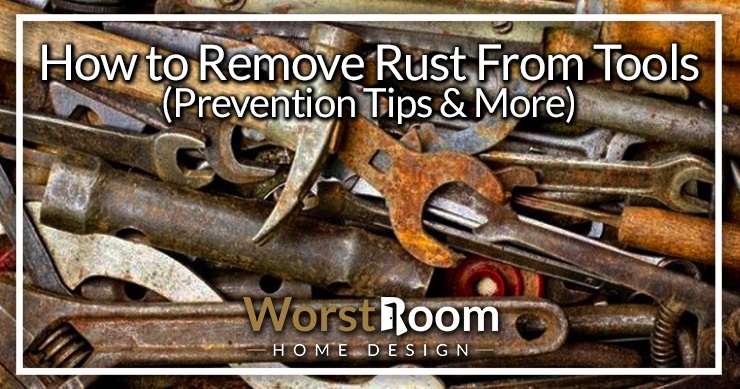
Another season has arrived and you head to the garage to find your gardening tools only to find they've gathered rust, and not just a little bit. It's not just them, but even your carpentry and woodworking tools. Even those rose pruners fell victim to the rust.
You'd be tempted to simply replace the cheaper ones but that doesn't solve the issue of the costlier tools. So what can be done?
How do you remove rust from tools without damaging them? It's not hard, in fact you probably already have some of the materials needed for the most common methods.
I'll show you how to clean rusty tools so they're like new and we'll discuss why this happens and how to prevent it in the future. It's a piece of cake once you know.
How to Clean Rusty Tools
Everyone at some point wants to know how to get rust off of any types of tools, and there's quite a few ways to get this done. I want to share a bunch because they're all dependent upon what kind of chemicals you have around the house.
You'll most likely have one or some combination of options sitting around in the garage or your storage closet.
Prepare a Work Area
First, go ahead and prepare an area where you'll take care of this work, whether on a tool bench or a tarp on the driveway. What you don't need are these chemicals and rust particulates getting in places they shouldn't.
It's not recommended to do this indoors. You'll want air flow and a surface where it's not a big deal if it gets dirty.
Gather Your Tools
Though your rusted tools are included, what I mean is that you want to gather the following the following extra items:
- Sandpaper, high grit and low grit
- Steel wool and/or a scouring pad
- A bunch of rags to ruin
- Liquid detergent
- Rust converter or chemical solution
The last item on the list is what we'll be talking about below. There are plenty of effective options to choose from. The others are for the preliminary work.
Preliminary Grime & Rust Removal
To start, you want to create a bowl or bucket of soapy water using the liquid detergent. Dipping your steel wool or scouring pad into the soap water, begin scrubbing your tools with the goal of removing dirt, dust, oil, grease, and other unwanted nastiness.
Get them as clean as possible and set them aside to drain and dry. If you care about scratching the tools, take care of how hard you're pressing down as you scrub, especially with steel wool. You can use a softer kitchen cleaning pad if you wish.
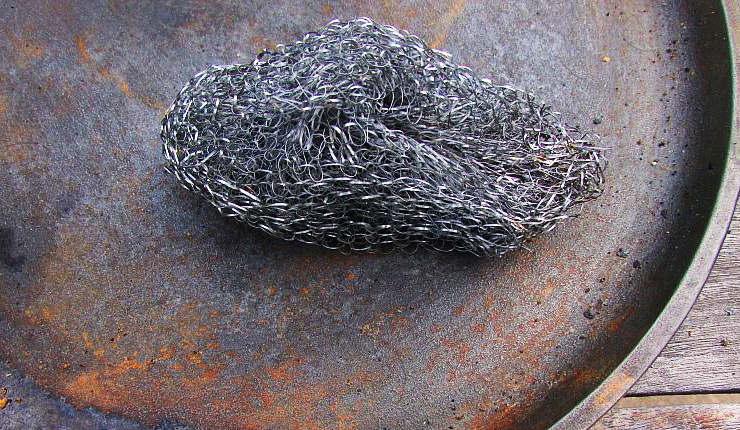
Once done with all of your tools, go ahead and pat them completely dry. Now you'll want to use the sandpaper to begin scraping the rusted surfaces so as much loose rust comes off as possible.
By the end you should be left with only embedded patches of rust. Start by using the coarse sandpaper and then move to the fine sandpaper.
The purpose here is to remove as many layers of rust as possible while scratching up the surfaces of the remaining bits so the chemicals can get in there to do their magic.
Use a Rust Cleaner
Now you're ready to remove the rest of the rust using a chemical mixture you'll either create from household goods or one that you've purchased (I have a recommendation below if you'd rather go this route).
Choose which you feel is most appropriate from the list just below this section.
Below I'm going to mention two types of rust cleaner. Some are chemical-based and will be more effective but have potential health hazards involved.
If you choose these, take care to make sure they don't aggravate any allergy you may have, and use proper eye protection and gloves. If you get any in your mouth, immediately spit it out and rinse your mouth.
The other type are natural rust cleaners that are organic and can be safely disposed of without extra considerations. They're inexpensive and you likely have them around the house.
They're less effective in a single use but with multiple applications they can remove rust as well as other harsher chemicals.
Dry & Lubricate
Once your tools are clean and clear of rust, make sure you dry them off completely or you risk having to do this again in the near future. Any tools that have movable joints like hand pruners will need to be re-lubricated with oil or grease.
You'll do well to spray the surfaces down with WD-40 if you are going to store the tools again, because it acts as a rust inhibitor.
Best Way to Remove Rust From Tools
Before I mention all of the other chemicals you can use to remove rust from tools, take a look at this product called Evapo-Rust:
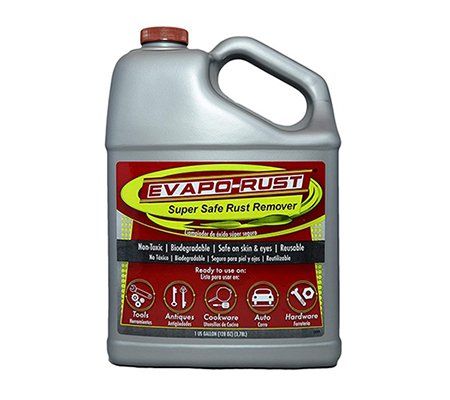
Instead of soaking and waiting and scrubbing and getting imperfect results, use a product like this to zap that rust quickly in a few hours.
It's perfectly designed for dissolving rust, is non-toxic, biodegradable, noncorrosive on your tools, and is safe to get in your eyes even (still not recommended). Soak and rinse and you're done.
The point is, it's superior and faster if you don't want to spend a bunch of time and effort restoring your tools. And it's cheap.
You can even pour it back into the bucket and re-use it again later. You can get a ton of uses out of one bottle. It's what I do these day and perfect if you don't mind waiting a few days on the shipping.
By the way, if you track rust into the house and onto your carpet, don't use chemicals like this to clean it up. Follow our advice to get ruts out of your carpet here instead.
Types of Rust Removers
Below are the natural and chemical-based solutions you can use to clean up your tools. In each section I also detail how to use them.
Natural Rust Removers
Our organic options include vinegar, lemon juice, and baking soda.
Vinegar - The vinegar method is simple. You fill up a bucket or plastic cup enough to submerge the rusted part of your tool completely and let it soak overnight. I recommend getting a few gallons so you can soak all of your tools at once in a typical 5 gallon bucket.
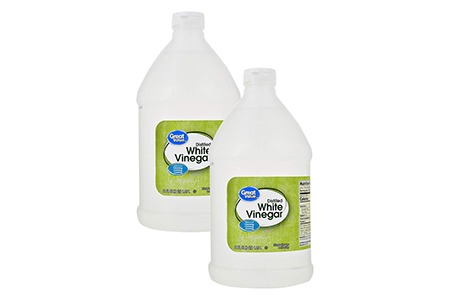
Sometimes as little as two hours is long enough but I'd give it overnight to really do most of the work for you. Otherwise you'll have to scrub harder and longer and possible soak for another round.
With enough soaking time allowed, using steel wool or a metal bristled brush should knock that rust right off. Rinse off and give your tools a quick scrub with baking soda to neutralize the acid and rinse again and you're done.
Lemon Juice & Salt - Though you can rub a lemon directly on the rust, the best way is to use enough lemon juice (add water if needed) to submerge the tools so they can soak overnight. You can add some salt for extra acidity.
From here out, the method is the same as the vinegar method. Let your tools soak in the solution, scrub them, rinse with baking soda, and they should be as good as new. You can buy full on citric acid but it's pretty strong, so soak for half the length of time if you go that route.
Baking Soda - We mentioned using baking soda to neutralize the acidic solutions above, but it can be used alone to get the job done. Dip your tools into a water bucket and shake off the excess water and then sprinkle baking soda onto the rusted surface.
Let it sit a few hours so the baking soda has time to soak in and break up the rust, and then scrub with your wire brush, steel wool, or scouring pad. You'll have to scrub a lot harder with this method and possibly do multiple passes, but it can be done.
You're better off with any other method really unless you're working with only a light amount of rust.
Oxalic Acid
If you don't mind a trip to a hardware store, you can buy some oxalic acid. Please use goggles and rubber gloves when working with this acid, because it's a serious but mild acid, not just acidic. Also, be aware of the fumes so you aren't inhaling them and don't use it indoors.
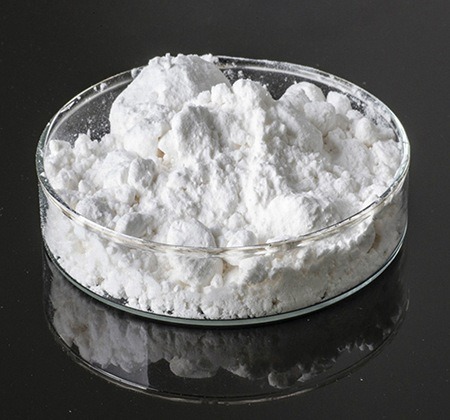
Unless already mixed, you'll want to dilute the acid in water with a ratio of 3 tablespoons of acid to 1 gallon of water. Submerge the tools for about 20 minutes. Once your timer chimes, remove the tools and rinse them off.
Most, if not all, of the rust should literally rinse off with minimal scrubbing. Any deep rust can be submerged again for another round.
Coke & Aluminum
This is a classic method that works so well that it makes you worry about drinking the stuff. Use Coca-Cola (the regular kind, not diet) to fill a bucket or small tub enough to submerge your tools. As always, let them soak for a few hours.
Return to them with crumpled up aluminum foil as to form it into a brush. Dip it into the soda and begin scrubbing your tools.
It helps to have a separate tub of water to rinse your tools in between scrubbings so you can check your progress. You'll have to put in some serious elbow grease but this does work.
WD-40
This common spray can remove light rust if you let it soak for about 10 minutes and provide a some scrubbing. I don't recommend wasting time with WD-40 for deep rust.
Also, be aware that it'll strip lubricants like grease, so make sure you aren't spraying it into movable joints or be prepared to re-grease.
Diesel or Kerosene
Either of these gasolines can act as a rust penetrant. Don't use acetones since they can remove the sealant from your tools (yes, that's baked in there). Again, fill a container with either liquid and allow your tools to soak for at least four hours if not over night.
All that's left is to scrub. You can use a cordless drill or power drill with an abrasive pad attachment if you get sick of scrubbing, and really any types of drills will work. Just use a fine grit sandpaper so you don't scratch your tools a bunch.
Electrolysis
If you've never heard of this word, you're basically going to electrocute your tools.
This means you need to take care to not zap yourself. It won't be high voltage since we'll be using a car battery charger that trickles in power, but it's enough that you won't enjoy the shock if you're not careful.
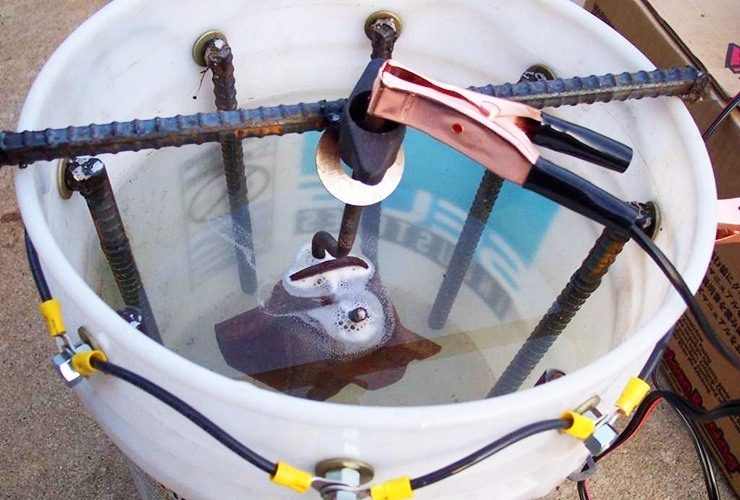
What you want to do is fill a bucket with water and mix in washing soda (like powder laundry detergent). Don't use baking soda as it's not the right compound. You want washing soda that is made from sodium carbonate.
You can dangle your tool in from the side of the bucket or use a piece of wood across the top in order to hang the tool. It's okay if it touches the bottom of the bucket, but you don't want the alligator clip of the battery charger to enter the water.
Use the battery charger clip to grasp the tool directly onto the metal so the electricity can flow through it and the water solution to activate the chemical reaction.
This is a safe and cheap method, costing maybe $30 tops. Explaining the whole process is too much for this article, so please visit this link if you intend to use this method.
Should I Restore Rusted Tools or Buy New Ones?
You should absolutely remove the rust from your tools. Unlike other items, our tools are built to last, even when you don't treat them right.
Using Evapo-Rust or any of the methods mentioned above, you can restore your tools to a shiny, new condition very quickly with minimal effort, saving a ton of money in the process. You can even paint over rust to help reduce it's ability to take hold in the future.
Tips to Prevent Rusty Tools
The best move is to not let your tools become rusty in the first place. It's fairly easy:
- Clean and dry your tools completely after every usage.
- Spray them occasionally with a rust inhibitor like WD-40.
- Store them in a dry, dust-free area with low humidity.
- Use silica gel packs in your toolboxes or use a wooden toolbox.
- For the very serious, use a dehumidifier in your tool room.
For the most part, keeping your tools dry and spraying them down with WD-40 is enough to defend them from rust. You can pick up WD-40 nearly anywhere, even at most grocery stores, and especially places like Walmart, Target, Lowes, and Home Depot or any hardware store.
How Does Rust Form?
Rust forms when steel and iron metals are exposed to oxygen and water over time. The chemical equation for the make-up of rust is: 4FE + 3O2 = 2Fe2O3.
It's basically iron and oxygen combined in a process called oxidation. The key component that kick starts the reaction is the moisture in the air, which contains water.
There's no way to start this chemical reaction from occurring on your steel or iron tools other than to store them in a lower humidity area and to coat them with a rust inhibitor. You should always make sure they are clean of dirt and dust and completely dry before storing them.
Removing Rust From Tools is Easy
As you can see, removing rust from your tools isn't hard even if you use one of the more time consuming methods. The easiest way is to soak them in a re-usable and totally affordable rust dissolver or rust converter solution, like Evapo-Rust or any similar product.
But if you'll trade time and energy for fifteen bucks, then any of the methods above using household products will get the job done. Just get ready to scrub!



